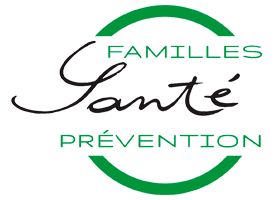Letter No. 166 of Pr. Henri Joyeux – 28th of July 2017
The immune status of a human ovum, and then of the fetus is very particular. His body is different and separated from the one of his mother. To his mother, he is like a – obviously compatible – graft.
The ovum is surrounded by a layer called trophoblast that does not carry any antigen with typical histocompability, but expresses another antigen called HLA-G, which was discovered in 1996 by Edgardo D. Carosella, a French immunologist who belongs to the team of Nobel prize Jean Dausset.
This antigen plays a crucial role in the continuation of pregnancy because it keeps the mother’s immune killing cells from weakening the construction of the embryonic body.
It is the operation of an innate immunity, which is « an immediate and general defense, that does not specifically attack an infectious germ and does not remember its identity.” It was discovered in 1996 by French Jules Hoffmann, for which he was awarded the Nobel Prize in 2011.
To the Nobel committee, this discovery “opened new avenues for the development of disease prevention and for the prevention of infections, cancer and inflammatory diseases.”
Science, especially medical science, is not static. Research feeds progress. In order to progress, one has to proceed to self-criticism and review our knowledge, challenge certitudes that sometimes have acquired a status of dogma, so much as it was born from the intuition of passionate researchers.
Our entire body developed from a single cell
The union of one single spermatozoid of a father and the egg of a mother possesses the entire potential of a long series of organs and tissues that will renew day after day until the age of 100 or 120 years.
As the embryo grows, his immune system gets ready so that, after baby’s birth, it is able to react to the antigens of the infant’s environment.
Any construction requires energy and matter. Energy is made of carbs and some lipids. Matter is made of minerals (sodium, potassium, calcium, phosphor, magnesium, silicon, etc.), amino acids, coupled together to form proteins, associated or not to fats in the form of metallo-lipo-proteins. All this is transmitted by the mother to her child through the placenta.
Therefore, the construction of the child in his mother’s womb requires that his mother maintains good nutritional habits and a blood flow that delivers good pressure and oxygenation to the placenta, which is an intermediate plate between mother and child. The child’s red blood cells are not his mothers’. His red blood cells, oxygen carriers, are extremely important. They are made first by the yolk sack [1], then by the liver ( from the fifth week of intra uterine life), and finally by the bone marrow located inside of the bones. White blood cells and platelet prepare at the same time before entering the blood stream.
In utero, baby takes shape and grows[2] in the amniotic fluid
Baby lives in a sterile, germ free environment. Therefore, in utero, baby is completely sterile: inside of his body and out, on his skin. He receives no antigen that could disturb him, only this mother’s antibodies.
He is protected against infections in two different ways: (1) By immune defenses naturally provided by his mother through the umbilical cord, and (2) by the amniotic fluid and amniotic membranes, that are like an immunological cotton-layer in which baby develops.
(1) Throughout the placenta, all immunoglobulins (antibodies) necessary to baby’s protection that are provided by the mother pass to the child through the umbilical cord.
(2) The amniotic fluid is at the same time nutritious and protective. Moreover, it stimulates lungs and digestive tract development since it is “inhaled” then “swallowed” by the fetus.
Evidently, the amniotic fluid is sterile and its composition changes throughout pregnancy. Its contents is well-known. [3] During the first trimester, it matches the maternal blood plasma. From the second trimester on, it also contains urines (mainly), lungs fluid and sterile digestive waste.
Fetal urines
During intra uterine life, the fetus drinks small quantities of amniotic fluid. His kidneys start working from the 8th week of life after conception. Kidneys produce urines from weeks 12 to 14. This from the second trimester, urine production amounts to approximately 110 mL/kg (3.7 oz/kg), and when the baby is full term, 700 to 900 mL/24 hours (23-30 per 14 hours).
Fetal urines progressively become the main source of amniotic fluid.
Shortly before birth, 4/5th of amniotic fluid contains the child’s urines, and the digestive tract is its main reabsorption location.
The fetus’ lung fluid
The lungs play an important role as second source of amniotic fluid in the five last days of pregnancy. They produce 200 to 400 mL (6.7 to 13.5 oz) per 24 hours, i.e. 10% of the fetal weight.
Digestive waste
The digestive tract of the embryo (up until 2 months) or the fetus (until 9 months), and of the newborn is sterile. It manufactures meconium [4], which is later found in the amniotic fluid and is evacuated at birth. Moreover, the fetus swallows the amniotic fluid. A full-term baby swallows about 700 mL (23 oz) amniotic fluid per day.
Throughout the Placenta Through the Umbilical Cord [5]
All the mother’s immunoglobulins and antibodies that are necessary to the child’s protection travel (through) the placenta.
But the child’s own immune system starts building up very early in throughout the embryo’s (0-2 moths) and the fetus’ (3-9 months) development.
Therefore, blood cells are present very early in the intrauterine life of the embryo.
Fertilization of the Human Egg Starts 2 Weeks After the End of the Mother’s Last Period
From the second week of life onward, the placenta develops and the blood of his mother diffuses to the embryo through his development pocket via the placenta. The placenta is built from the embryo and as the embryo develops. The mother and the child’s blood groups differ since the child’s genetic profile is a mix of his father and mother’s.
At three weeks, with the umbilical cord, the blood flow sets up: that is what is called “angiogenesis”, or vessels’ building. It develops in the liver, then in the spleen, the bone marrow, muscles including the heart. This order reflects the importance of our body’s organs.
A three weeks, the embryo’s heart beats twice as fast as the adult’s.
At 8 weeks, from the second month, when the embryo becomes a fetus, one can find immune cells (natural Killer) in the liver, which differentiate in the bone marrow to transfer into the thymus at 10 weeks.
At 12 weeks, from the 3rd month, the numbers of T4/CD4 [6] and T8/CD8 [7] cells, well known for their importance for immunity, are comparable the ones in a healthy adult. Indeed, the numbers of T4/T8 normally exceeds a 1 to 1 ratio. In AIDS patients, this ratio reverses to reflect the seriousness of immune deficiency, and associated risks of infectious complications.
At 16 weeks (4th month), lymphocytes are capable of fighting specific antigens, but are still “naïve”, due to their lack of memory.
At 20 weeks, the 5th month, white blood cells capacity to proceed to phagocytosis and their bactericidal capacity are active [8]. At birth, numbers of white blood cells in infants quickly reaches comparable numbers as in adults.
A weak production of antibodies by lymphocytes B and immunoglobulines G (IgG) at birth will logically be compensated by the passage of mother’s IgG through the placenta during the third trimester.
However, such compensation at the end of pregnancy is still very weak in preemies. Thus they are particularly exposed to bacterial infections, even with vaccines.[9]
At birth, the newborn develops a characteristic increase in blood lymphocytes. In the first year of life, his absolute numbers of lymphocytes T CD4 (65%) and CD8 are superior in the same cells’ numbers in an adult. This shows how important this ratio is, since it reveals a person’s immune capacities.
In patients with AIDs, the most serious disease that can attack the immune system, this ratio reverses, and then collapses.
At birth, the newborn lymphocytes, even “naive”, play their role. With their progressive exposure to antigens that surround the infant, they become active, manufacture antibodies and acquire memory. Immunity is active.
From birth on, levels of immunoglobulins (Ig) synthesized by lymphocytes B is still very low. Production increases progressively to reach a comparable rate to adults once the child reaches the age of 4. From age 2, what has been already manufactured protects the child. His immune system is in place, capable of manufacturing antibodies and to memorize aggressions. It is the ideal moment to vaccinate children against truly dangerous diseases.
Maternal IgG progressively disappear in the first months of life. It accounts for the infant’s transitory hypogammaglobulinemia (i.e. lack of gamma globulins) around age 6 months.
Overall, a child acquires immune maturity only around age 2.
Supplementing Immunity with Breastfeeding: The Best Post-Birth Vaccine
Mother’s milk: a natural vaccine
Around age 6 months, mothers typically start partially weaning their child. According to WHO’s recommendation, breastfeeding should be pursued partially, mornings and evenings, for example before and after the mother’s work.
Pharmaceutical empires and the French administration seek to impose multiple vaccinations, i.e. 6x vaccines, 5 more, plus all the boosters well before children are 6-months old, although they are not endangered at that age.
As scientifically observed in veterinary medicine, there could be a competition between the mother’s antibodies and the antibodies induced by vaccines. From there would follow a “immunological storm” in the newborn, the consequences of which are still unknown, but could be serious: malign hyperthermia, convulsions, neurological disorders with unforeseeable consequences, which worries families.
Paradoxically, although vaccines’ efficiency and safety are proven for the greatest number of people, medicine and science do not exactly know how they operate. Moreover, they do not study their medium and long-term effects.
Previous to any marketing authorization for standard medication, long pharmaco-kinetics and toxicity studies are required, that seek knowledge about the evolution and effects of injected molecules in the body. Such studies are not compulsory when it comes to vaccines.
For vaccines, outside of the numbers of diseases observed upon vaccinating, no precise timeline is imposed for statisticians to assess risks.
Let’s not forget that the 11 mandatory shots (in France from January 2019) inject to a child, between ages 6 weeks and 6 months, almost 3mg of aluminum that has nothing to do in his body. Aluminum can only damage the body of a child in the middle or long term.
In the meantime, vaccine propaganda is at his highest. Not a word, not a show nor an article will recommend breastfeeding. If it is so useful to infant’s health, why should it only be recommended to African women?
We often witness practices revealing that financial interest take priority over health benefits. Health benefits of vaccines are often put forward without rock-solid evidence by manipulating emotions so as to obtain ever earlier vaccination protocols, as close to birth as possible. These are abusive practices that feed arguments of the anti-vaccine movement, to which I do not belong.
All pediatricians know that children’s immune system need approximately 1000 days from conception, i.e. the 9 months of pregnancy plus 2 years (2x 365 days).
At age 18-24 months, the child’s immune system is considered mature. That is why in its wisdom, French law made Diphtheria-Tetanus-Polio vaccines compulsory before the age of 18 months.
Do not hesitate to spread the word on this letter to expectant parents, and to people planning on becoming pregnant.
The goal is not to oppose vaccines, which would be stupid and dangerous, but rather to oppose abuse and excessively early vaccinations.
Here is what reconciliate anti-vaxx and the people who want to impose vaccination.
Best regards,
Pr. Henri Joyeux
Sources
[1] A nutritional reserve for the embryo’s development.
[2] At age 2 and a half months (10 weeks pregnancy), the little human person is no bigger than about 3cm or 1.18 inches. His body is shaped, and his head, hands and gender are easily identifiable.
[3] Complex fluid, made of water, minerals, glucose, lipids (lecithin /sphingomyelin) for the growing lungs and the brain, bactericidal proteins and flaked epithelial cells belonging to the fetus.
[4] Meconium comes from greek “mêkônion”, meaning “poppy juice”. The term was adopted because of the look of this viscous greenish or brownish matter that resembles poppy juice.
Meconium is also sticky, viscous, greenish, brownish or even blackish, and odorless. It is generally abundantly expelled by the newborn. The amniotic fluid that was swallowed exits at the other extremity of the digestive tract, transformed.
[5] The umbilical cord’s blood, that contains two arteries and a return vein, carries infants’ source cells with great potential. They can be kept in a reserve to be used later to treat a disease. The cord’s cells are often more efficient than the cells of the bone marrow, which are too scarce.
[6] CD4 T-lymphocytes (Cluster Differenciation of 4) are glycoproteins that express at the surface of T4 lymphocytes, regulator T cells, monocytes, macrophages, and some dentritic cells. These are “Helper” cells. They amplify the immune response that has been destroyed by AIDS.
[7] CD8 (Cluster Differenciation of 8) are suppressor and/or cytotoxic (« killer ») lymphocytes. The keep some reactions from happening and are capable of killing cancer cells. They need CD4s to act.
[8] Capacity to assimilate or absorb toxicity and to destroy bacteria.
[9] See the book: Toute la vérité sur les vaccins–Comment se réconcilier avec les vaccinations?, p. 230, Le Rocher 2017 ( Translated title: “The truth about vaccines : How to reconcile with vaccination”. More infectious and respiratory complications than preventative effects were observed upon vaccinating severely premature infants.
La Lettre du Professeur Joyeux is an independent and free information service est un service. It specializes providing the wider public and families with disease prevention information. Click here to subscribe to the letter.
This health advice is provided free of charge by this organization and cannot be considered as personal medical advice. No treatment should be initiated solely on the basis of this content. It is strongly advised to consult a properly licensed health professional to seek responses with regard to one’s health and well-being. No information or product mentioned on this website is meant to diagnose, treat, atone or cure a disease.
You have a Personal Health Question ? ( Confidential response) or you wish to enjoy our exclusive services?
Become an exclusive member of our association for one year by clicking HERE.





